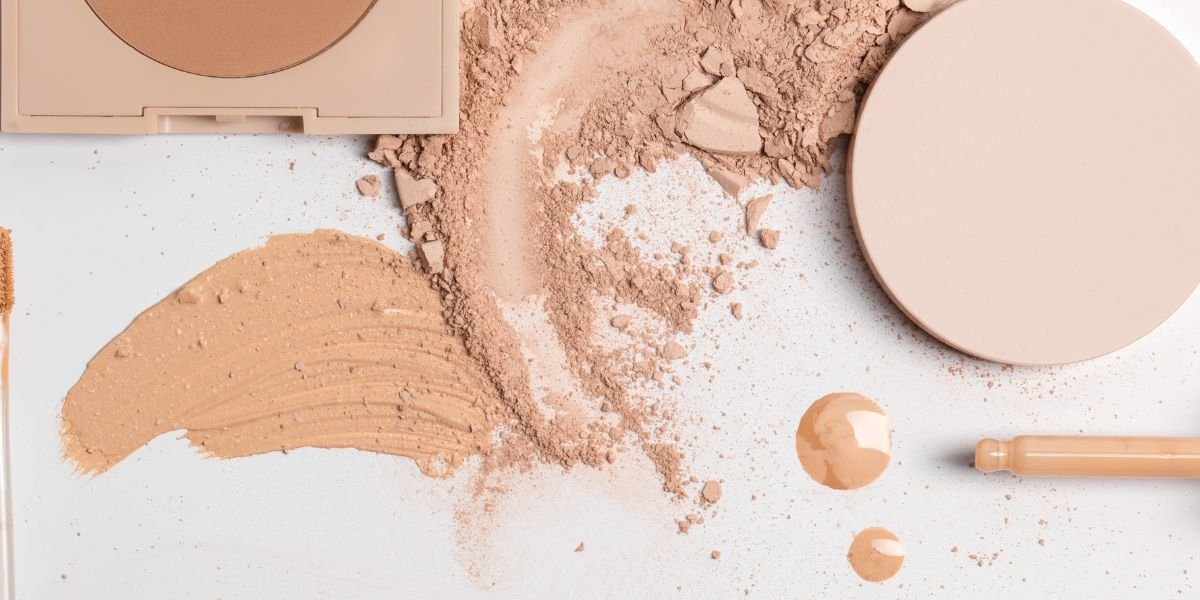What Are the Key Differences Between Matte and Dewy Foundations?

If you’ve ever wondered about the difference between matte and dewy foundations, the distinction goes beyond just the finish. Understanding how these two types of foundations vary can help you achieve the perfect base for your makeup look. From how they cater to different skin types to the coverage they offer, each foundation type has its unique characteristics that can impact your overall makeup outcome. So, before you make your next foundation choice, consider diving into the nuances of matte versus dewy to ensure your skin looks its best all day long.
Matte Vs Dewy: Understanding the Basics
If you’re new to the world of makeup, understanding the difference between matte and dewy foundations is essential for achieving your desired look. Matte foundations provide a flat, shine-free finish that’s perfect for those with oily skin or who prefer a more velvety appearance. On the other hand, dewy foundations offer a luminous, glowing finish that’s ideal for individuals with dry skin or anyone looking to achieve a radiant complexion.
Matte foundations work by absorbing excess oil on your skin, giving you a matte, airbrushed look. They’re great for controlling shine throughout the day and are typically long-wearing. Dewy foundations, on the other hand, contain light-reflecting particles that add a natural glow to your skin. These foundations are perfect for creating a fresh, hydrated look.
When choosing between matte and dewy foundations, consider your skin type and the look you want to achieve. Experimenting with both finishes can help you determine which works best for your skin and personal style.
Coverage and Finish Differences
To distinguish between matte and dewy foundations effectively, it’s important to understand the variations in coverage and finish they offer. Matte foundations typically provide a fuller coverage that helps to conceal imperfections such as blemishes, redness, and uneven skin tone. The finish of matte foundations is often velvety and smooth, giving a more polished look to the skin.
On the other hand, dewy foundations offer a lighter coverage that allows the natural skin texture to show through. The finish of dewy foundations is luminous and radiant, providing a fresh and glowing appearance.
When choosing between matte and dewy foundations based on coverage and finish, consider your skin type and the desired look. If you have oily skin or prefer a more polished and matte finish, opt for a matte foundation. For those with dry skin or looking for a natural, luminous finish, dewy foundations would be more suitable.
Understanding these differences can help you achieve the desired makeup look that complements your skin type and personal style.
Skin Type Suitability
Considering your skin type is crucial when determining whether a matte or dewy foundation would be more suitable for you. If you have oily skin, a matte foundation might be the better option as it can help control shine throughout the day. Matte foundations have oil-absorbing properties that can keep your skin looking fresh and matte.
On the other hand, if you have dry skin, a dewy foundation could be more suitable. Dewy foundations provide a luminous and hydrating finish that can add a healthy glow to your complexion. For those with combination skin, choosing a foundation that balances your skin’s needs is essential. You might opt for a matte foundation in areas prone to oiliness and a dewy foundation in drier areas to achieve a balanced look.
Understanding your skin type and its specific requirements will guide you in selecting the foundation finish that best complements your skin.
Application Techniques
Wondering how to achieve a flawless application of either matte or dewy foundation? The application technique you use can significantly impact the finish and longevity of your makeup. When applying matte foundation, start with a well-moisturized face to prevent a cakey appearance. Use a damp makeup sponge or a dense brush for an even and smooth application. Blend the foundation in a downward motion to avoid emphasizing any facial hair or texture.
On the other hand, dewy foundation application requires a slightly different approach. Begin by prepping your skin with a hydrating primer to enhance the glowy finish. Opt for a damp beauty sponge to apply dewy foundation, focusing on pressing the product into the skin for a natural look. Consider using your fingers for a more sheer coverage or a brush for a fuller application.
Regardless of the finish you choose, remember to set your foundation with a translucent powder to prolong its wear and prevent excess shine throughout the day. Mastering the right application technique will help you achieve a flawless complexion with either matte or dewy foundation.

